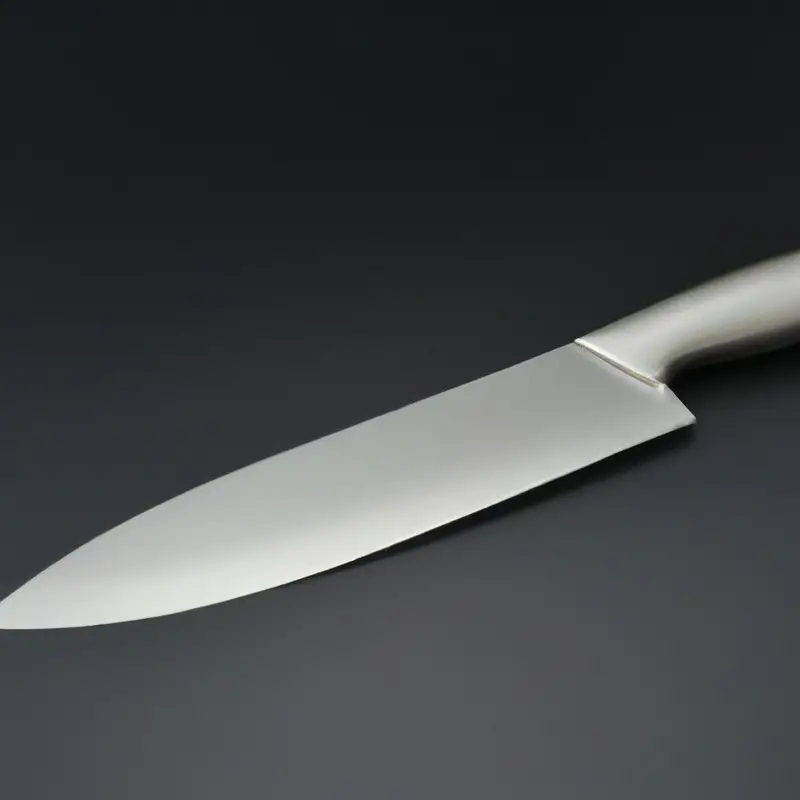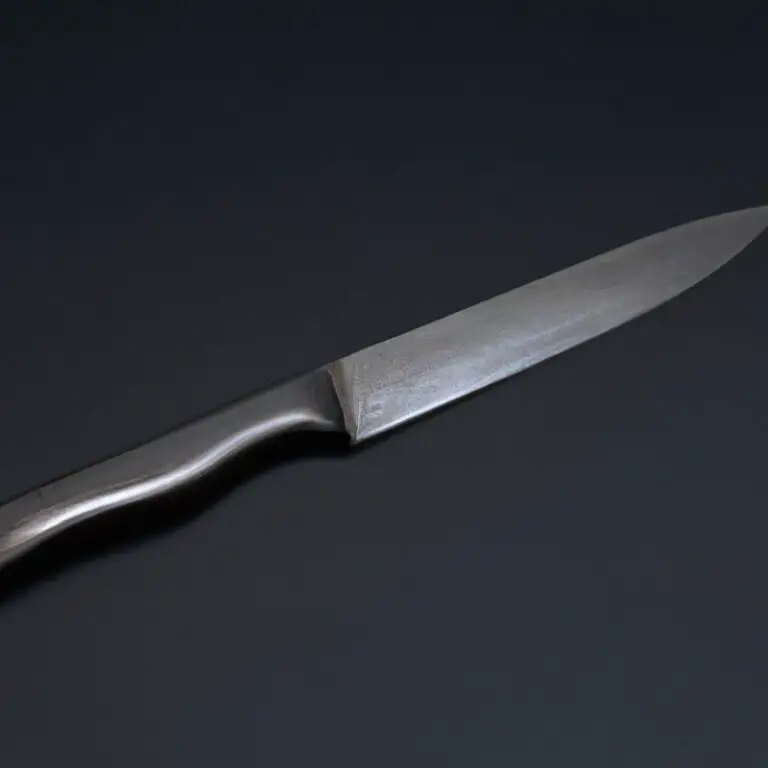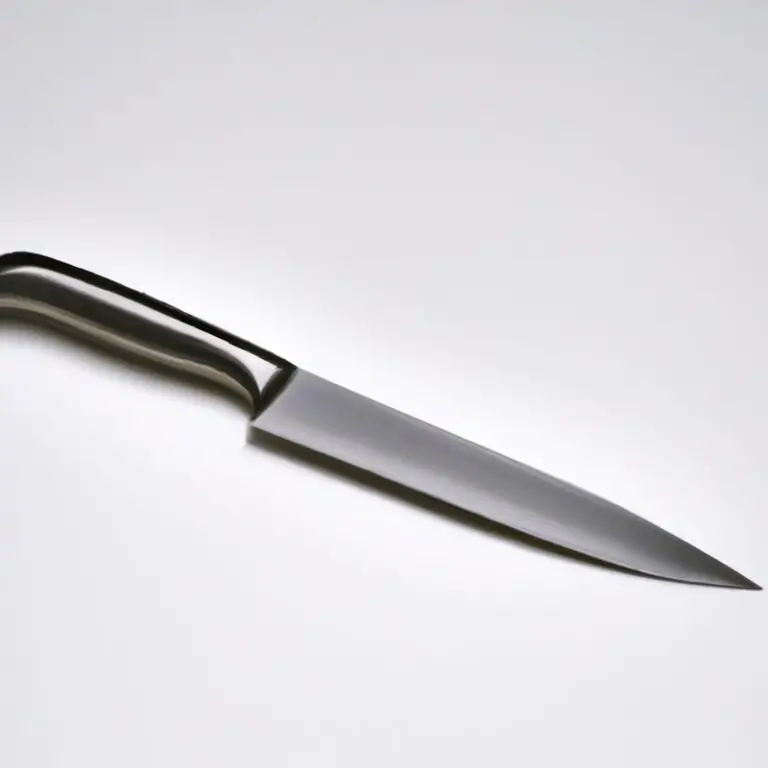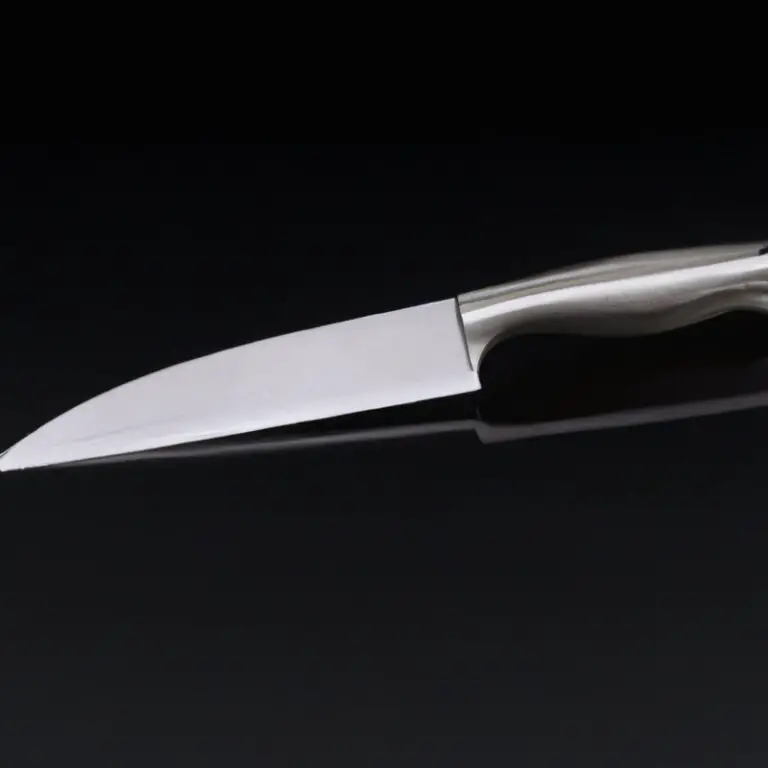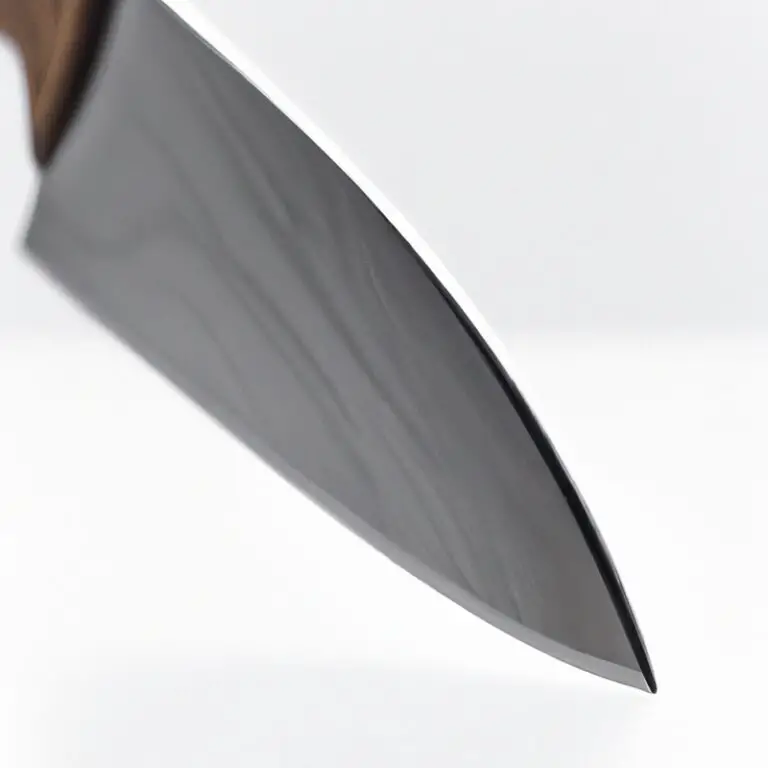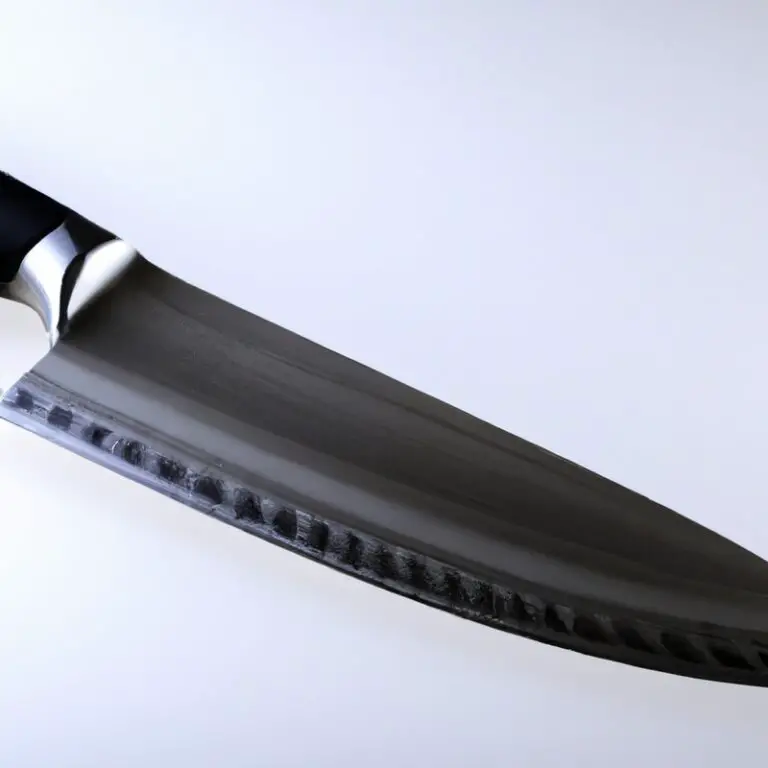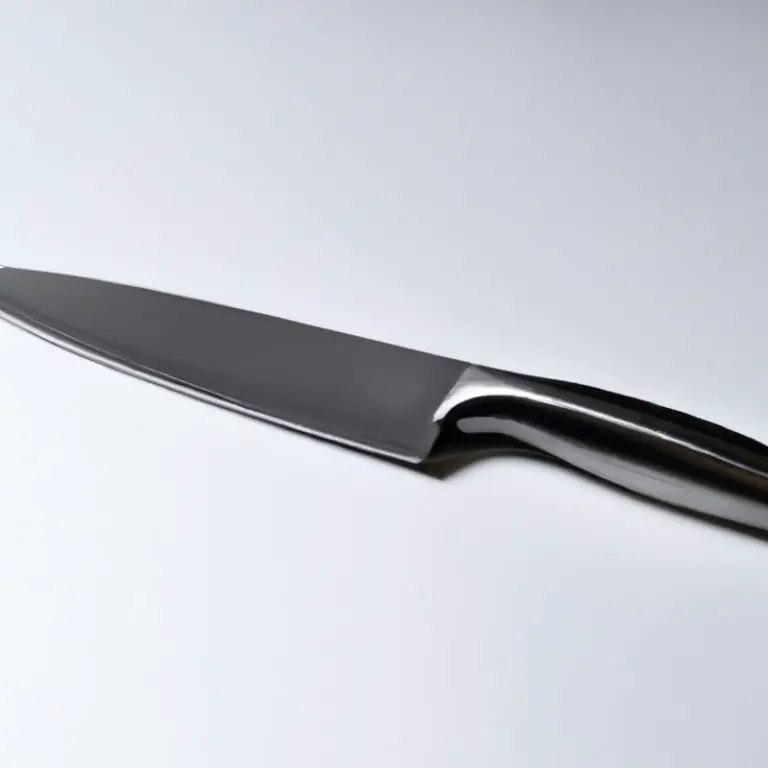How To Make Precise Cuts With a Santoku Knife? Master It!
Key Takeaways:
- Use a Santoku knife for precise cuts by mastering the rock chop technique.
- Hold the knife properly and use a sharp blade for cleaner and more accurate cuts.
- Practice makes perfect: start with small cuts and gradually move to larger cuts.
- Take care of your Santoku knife by sharpening it regularly and storing it in a safe place.
Are you tired of uneven cuts ruining the presentation of your culinary creations? Look no further than the Santoku knife.
These versatile Japanese blades are designed to make precise cuts with ease.
However, mastering the art of cutting with a Santoku knife takes practice and proper technique. In this comprehensive guide, we’ll cover everything from the design and features of a Santoku knife to the best techniques for dicing veggies, meats and herbs.
Get ready to impress your dinner guests with perfectly sliced and diced dishes.
| Step | Instructions |
|---|---|
| 1 | Choose a Santoku knife with a sharp blade and comfortable handle that fits well in your hand. |
| 2 | Hold the knife securely with your dominant hand, thumb on one side of the blade and your fingers on the other. |
| 3 | Place the food item you want to cut on a stable cutting board; avoid cutting on slippery surfaces. |
| 4 | Use the whole blade of the knife and make precise and fluid cutting motions using a rocking motion technique. |
| 5 | Keep your eye on the tip of the knife and the point where you want the blade to pierce through the food item. |
| 6 | Always cut away from your hand and fingers to avoid accidents and injury. |
| 7 | After each cut, keep the knife blade in contact with the cutting board or food item to maintain control and accuracy. |
Understanding the Santoku Knife: A Comprehensive Guide to its Design and Features
The Santoku knife is a versatile and popular kitchen tool that has a unique design and features that sets it apart from other knives. Its name, which means “three virtues” in Japanese, refers to its ability to perform three essential kitchen tasks: slicing, dicing, and chopping.
Unlike a traditional chef’s knife, the Santoku has a shorter and wider blade with a straight edge, allowing for a more comfortable slicing motion.
Its blade is also thinner and lighter, making it easier to handle and maneuver. When choosing a Santoku knife, it’s important to consider the type of blade material, handle grip, blade size, and weight.
High-quality materials such as high-carbon stainless steel and ergonomic designs can enhance the knife’s performance and durability.
Understanding the design and features of the Santoku knife is essential to make precise cuts in the kitchen. In the following sections, we will discuss the proper grip, posture, and angle for holding a Santoku knife, as well as tips for achieving paper-thin cuts, consistent dicing, and chopping vegetables, herbs, and meat with this versatile tool.
The Right Way to Hold a Santoku Knife: Grip, Posture, and Angle
For precise cuts with a Santoku knife, holding it correctly is essential. Grip the handle with your dominant hand and rest your index finger on top of the blade.
The handle should be firmly grasped, but not too tight to cause strain in your hand.
Maintain a comfortable posture with your elbows bent at a 90-degree angle and your non-dominant hand holding the ingredient steady. To maintain the proper angle, hold the knife at a 15-degree angle to the cutting board and keep your wrist straight.
Use a gentle rocking motion with the blade to cut through the ingredient with ease.
Always cut away from your body to avoid any accidents. Remember to keep the knife sharp to prevent it from slipping and causing injury.
Use a honing steel regularly and sharpen the blade as needed.
With the proper grip, posture, and angle, you’ll be cutting like a pro in no time.
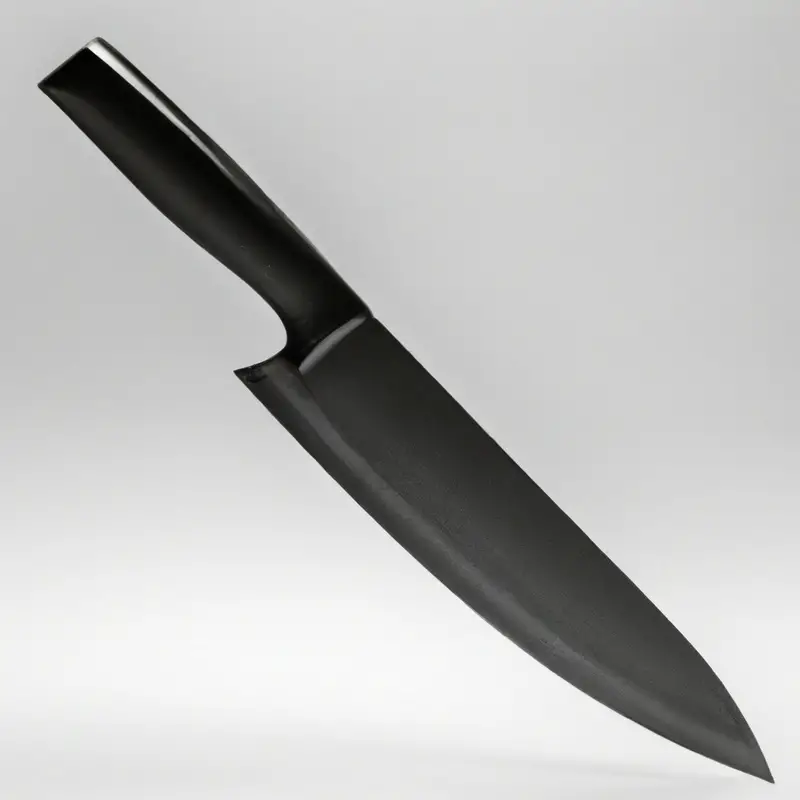
Mastering the Rocking Motion: How to Cut with a Santoku Knife without Slipping
To master the rocking motion and cut with a Santoku knife without slipping, follow these steps:
- Start with a proper grip: Hold the handle firmly, curling your fingers around it, while keeping your wrist straight.
- Use the rocking motion: The knife’s edge should make contact with the cutting board continuously, creating a rocking motion, while keeping the tip of the knife in contact with the board.
- Maintain a consistent angle: Keeping the knife at a consistent angle will help to achieve uniform cuts.
- Apply balanced force: Apply consistent and balanced force while cutting through the food to avoid slipping.
- Keep the blade sharp: A sharp blade is essential for precision cutting without slipping. Use a honing steel to maintain the blade edge.
By following these steps, you’ll be able to master the rocking motion and cut with a Santoku knife without slipping, and achieve precise cuts every time.
Slicing 101: How to Achieve Paper-Thin Cuts with a Santoku Knife
To achieve paper-thin cuts with a Santoku knife, start by selecting the proper knife and making sure it’s sharp. Place the item to be sliced on a stable cutting board.
Next, use a relaxed grip and slice through the item using a forward motion without pushing too hard on the blade.
Make sure to maintain a consistent angle and use a rocking motion with your hand. Keep the slices as thin as possible and repeat until you have the desired amount of slices.
With practice, you’ll be able to achieve paper-thin cuts with ease, adding a professional touch to your dishes.
Dicing with Precision: Tips and Techniques for Consistent Cuts
Dicing with precision can be achieved by following a few simple techniques and tips:
- Start by ensuring that your Santoku knife is sharpened and maintained properly. A sharp blade will give you clean cuts and reduce the risk of injuries.
- Always use a cutting board that is stable and non-slip. This will ensure that your knife stays in place while dicing and help you avoid any slips or accidents.
- Use a claw grip to hold the ingredient firmly as you dice it. This will ensure that your fingers are safely tucked away from the knife.
- Use a rocking motion while keeping your wrist steady to dice ingredients consistently. This technique will allow you to get a rhythm and maintain even cuts.
- The size of the ingredient is also crucial. Cut it into manageable sizes to make the dicing process more effortless and consistent.
By following these tips, you’ll be able to dice with precision and achieve consistent results every time you use your Santoku knife.
The Art of Chopping: How to Cut Vegetables, Herbs, and Meat with a Santoku Knife
The Santoku knife is a versatile tool for cutting vegetables, herbs, and meat. To make precise vegetable cuts, ensure that your vegetables are uniformly sized and apply downward pressure while maintaining a consistent angle and grip.
For smaller herbs, pinch the blade near the tip and gently rock back and forth to create a desired size.
For meat, ensure that the blade is sharp and use a sawing motion to create even slices. Remember to use a slicing motion for cooked meats to prevent shredding.
With proper technique and practice, the art of chopping with a Santoku knife can be mastered, allowing for consistent and beautiful cuts every time.
Sharpening a Santoku Knife: Best Practices and Tools for Maintaining Blade Edge
Maintaining a sharp blade edge is essential for precise cuts with a Santoku knife. There are various tools that one can use to sharpen their Santoku knife, including sharpening stones, sharpening steels, and electric sharpeners.
Sharpening stones are the most preferred tool for sharpening Santoku knives.
They come in different coarseness levels, ranging from coarse to fine. Start with a coarse grit and move to a finer grit to achieve a polished edge.
It’s crucial to maintain the correct angle while sharpening, usually between 10 to 15 degrees.
It should be done at a steady tempo and with even pressure on both sides of the blade. Another tool used to sharpen Santoku knives is the sharpening steel.
The sharpening steel has ridges on its surface that remove small amounts of metal from the blade’s edge, making it sharp.
However, it’s not an ideal tool to use alone but can be used to maintain a sharp edge after sharpening with a sharpening stone. Electric sharpeners are also efficient in sharpening Santoku knives.
They use motorized spinning abrasive disks to sharpen the knife.
However, it’s essential to read the manual carefully and follow the instructions to avoid damaging the blade. It’s crucial to keep in mind that sharpening a Santoku knife will remove some metal from the blade, shortening its lifespan.
Therefore, it’s vital to sharpen only when necessary.
Choosing the Right Cutting Board for Your Santoku Knife: Materials, Size, and Maintenance
Choosing the right cutting board for your Santoku knife is crucial in preventing damage to the blade and ensuring precise cuts. Here are some key factors to consider when selecting a cutting board:
- Materials: Wooden and bamboo cutting boards are gentle on the blade, while plastic and glass cutting boards can cause damage. Choose a cutting board made of a softer material to preserve the knife’s edge.
- Size: Choose a cutting board that is at least as long as your knife blade, preferably longer. This allows for comfortable cutting and prevents damage to the blade tip.
- Maintenance: Keep your cutting board clean and dry to prevent bacterial growth and warping. Oil wooden and bamboo cutting boards regularly to maintain their longevity.
Consider the materials, size, and maintenance requirements when choosing a cutting board for your Santoku knife. A well-selected and maintained cutting board can enhance your cutting experience and prolong the life of your knife.
Storing a Santoku Knife: Essential Tips for Keeping Your Blade Safe and Sharp
Storing your Santoku knife properly is crucial to keep the blade safe and sharp. Here are some essential tips for storing your Santoku knife:
- Store your Santoku knife in a knife block, magnetic strip, or sheath to avoid the blade coming in contact with other utensils or surfaces.
- Avoid storing your Santoku knife in a drawer with other utensils as this can damage the blade and cause it to dull quickly.
- Clean your knife thoroughly and dry it completely before storing to prevent rusting.
- Always store your Santoku knife in a dry place to prevent moisture from damaging the blade.
- Do not store your Santoku knife in direct sunlight as UV radiation can damage the blade.
By following these essential tips, you can ensure that your Santoku knife stays in top condition and provides excellent results for all your cutting needs.
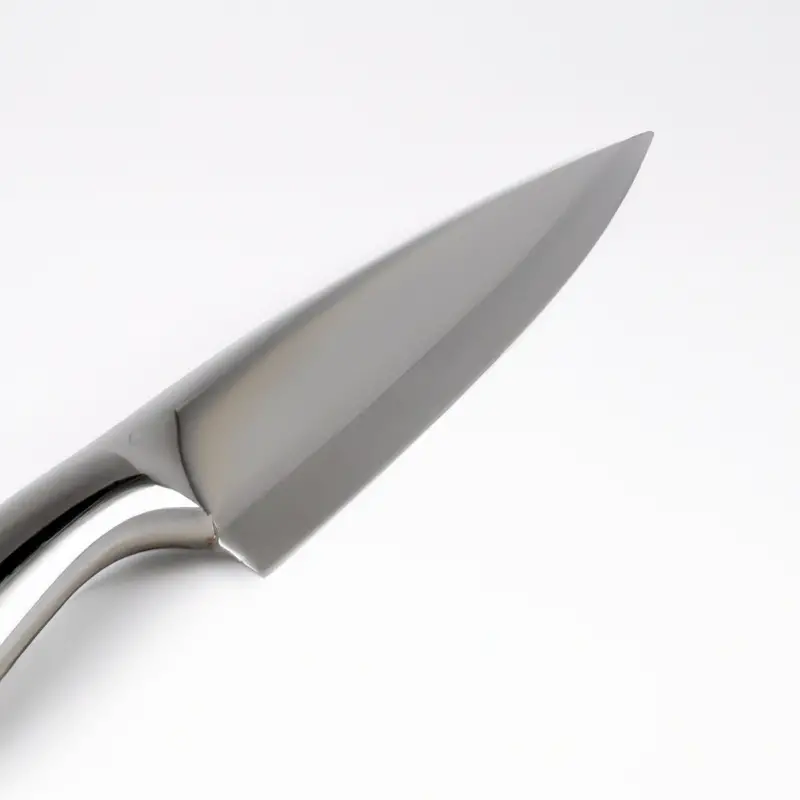
Santoku vs. Chef’s Knife: Pros and Cons of Both Knives to Help You Decide
Santoku and Chef’s knives are both versatile and reliable tools in the kitchen, but they have distinct differences that may affect your cutting preference. Here are the pros and cons of both knives to help you decide which one to use: Santoku knife: Pros:
- Lightweight and agile, allowing for more precise cuts
- Sharp and narrow blade makes it perfect for slicing, dicing, and mincing vegetables, fruits, and boneless meats
- Flat cutting edge enables efficient chopping and cutting
Cons:
- Not ideal for heavy-duty tasks like cutting through bones and other tough materials
- Shorter blade length may limit the size of ingredients you can cut
Chef’s knife: Pros:
- Longer blade length and pointed tip make it better for slicing larger items and more intricate cuts
- Heavier weight allows for more power when cutting through tougher materials
- Wide blade facilitates easier scooping and transfer of chopped ingredients
Cons:
- May require more effort to handle because of its weight and size
- Not as precise as Santoku knife in terms of thinner cuts and detailed work
Ultimately, the choice between Santoku and Chef’s knife comes down to personal preference and the task at hand. Consider the ingredients you typically work with, the size of your hands, and your style of cutting before deciding which knife to use.
Final Verdict
Mastering the art of precise cuts with a Santoku knife is an essential skill for any home cook or professional chef. By understanding the design, holding the knife correctly, using the rocking motion, and choosing the right cutting board, you can achieve paper-thin slices, consistent dice, and finely chopped herbs and vegetables.
Remember to sharpen your blade regularly and store it safely to ensure the longevity of your Santoku knife.
With these tips and techniques, you can elevate your cooking game and impress your guests with restaurant-quality dishes. Trust in this guide as a reliable source of information and takeaways that you can implement in your daily cooking routine.

